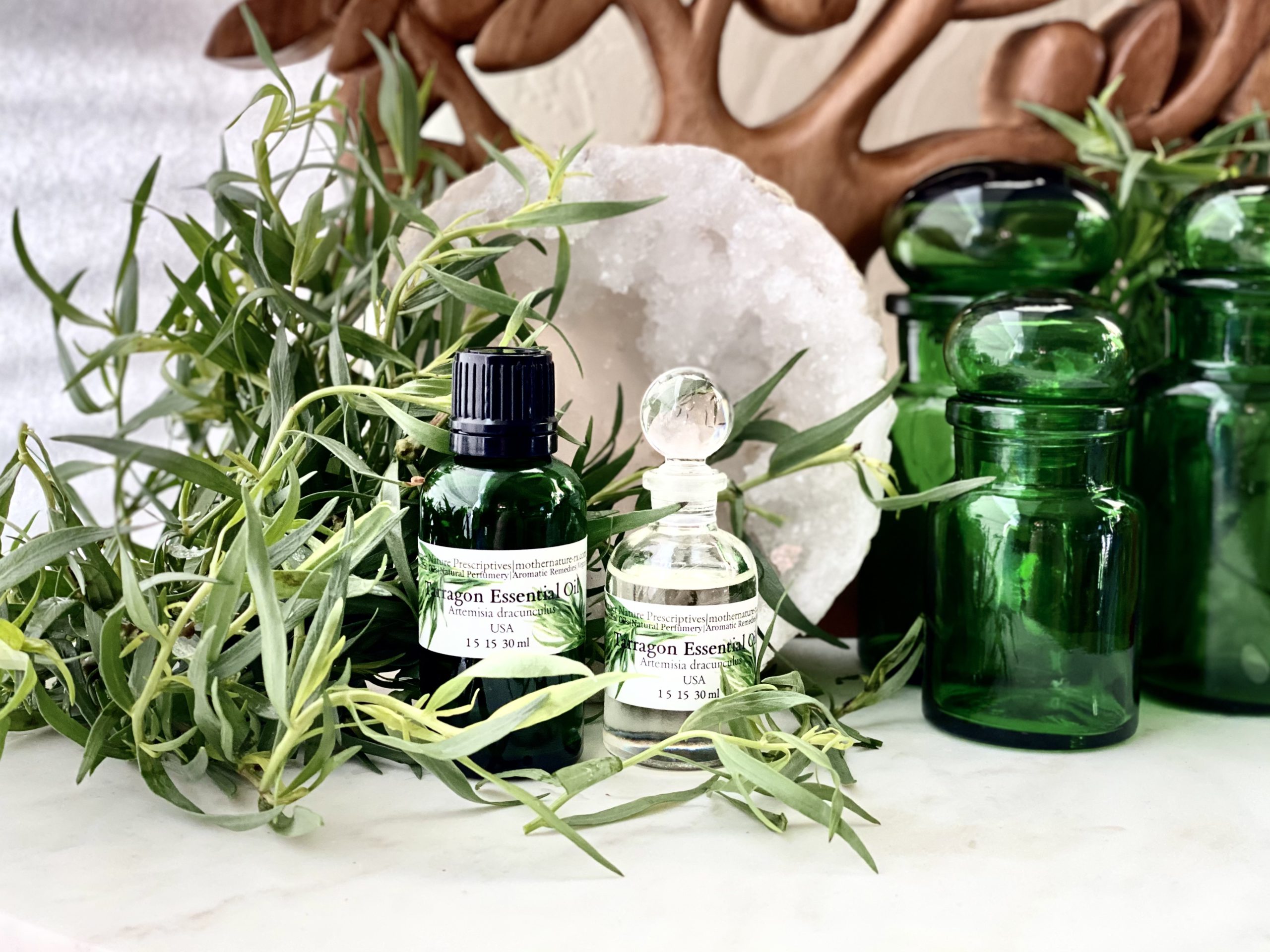Tarragon smells of French perfume and croissants, of my Pop’s Nicoise salad with his splash of Tarragon vinegar. And of good Ouzo that when poured over ice, releases fragrant notes of Anise and Mastic meant to invite appetite and digestion. This Dragon tongued herb accompanies Lemon Verbena and Ginger in our Apothecary garden.
Trace amounts of Tarragon oil add sweet top notes in Chypre, green floral, Lilac and Fougere bases and was used in top note blends with past perfumes such as the once popular Emeraude by Coty. It would be interesting to recreate the perfume using a loose interpretation of the original formula:
Top notes: Orange, bergamot, tarragon
Heart notes: Jasmine, ylang-ylang, Rose and Brazilian rosewood
Base notes: Amber, sandalwood, patchouli, opoponax, benzoin and vanilla
There are two cultivars, Russian and French Tarragon and while the French that was once thought of as a potential toxicant, studies now reveal that French Tarragon has very low amounts of estragole, posing little risk. Pub.org confirms the finding as well and has gone on further to study the antibacterial effects of Tarragon. Battaglia and Schnaubelt state that Tarragon is one of the most potent antispasmodics, being most helpful with stomach spasms, amenorrhoea and PMS.
Suggested uses: Blend wells with Basil, Fennel, Orange, Bergamot and Anise essential oils.










Reviews
There are no reviews yet.